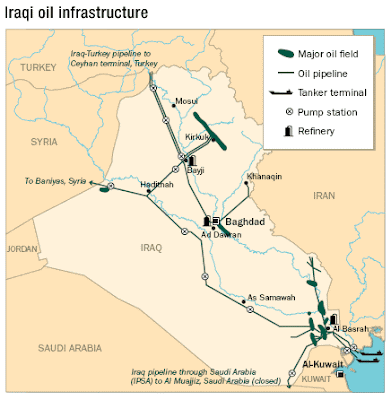As
oil prices soared to record levels in recent years, basic economics suggested that consumption would fall and supplies would rise as producers drilled for more oil. But as prices flirt with
$120 a barrel, many energy experts are becoming worried that neither seems to be happening. Higher prices have done little to suppress global demand or attract new production, and the resulting mismatch has sent oil prices ever higher.
That has translated into more pain at the pump, with gasoline setting a fresh record of $3.60 a gallon nationwide on Monday. Experts expect prices above $4 a gallon this summer, and one analyst recently predicted that gasoline could reach $7 in the next four years.
A central reason that oil supplies are not rising much is that major producers outside the
Organization of the Petroleum Exporting Countries cartel, like
Russia, Mexico and Norway, are showing troubling signs of sluggishness. Unlike
Organization of the Petroleum Exporting Countries, whose explicit goal is to regulate the supply of oil to keep prices up, these countries are the free traders of the oil market, with every incentive to produce flat-out at a time of high prices.
But for a variety of reasons, including sharply higher drilling costs and a rise of nationalistic policies that restrict foreign investment, these countries are failing to increase their output. They seem stuck at about 50 million barrels of oil a day, or 60 percent of the world’s oil supplies, with few prospects for growth.
“
According to normal economic theory, and the history of oil, rising prices have two major effects,” said
Fatih Birol, the chief economist at the
International Energy Agency in Paris. “
They reduce demand and they induce oil supplies. Not this time.”
With global supplies tight, geopolitics continue to play a big role in pushing up oil prices. Oil futures closed at $118.75 a barrel, up 23 cents, on the
New York Mercantile Exchange, after strikes by oil workers in Scotland and Nigeria that shut down nearly 1.7 percent of the world’s daily production.
Countries outside the
Organization of the Petroleum Exporting Countries have been the main source of production growth in the past three decades, as new fields were discovered in
Alaska, the
North Sea and the Caspian region.
But analysts at Barclays Capital said last week that
non-OPEC supplies were “seemingly dead in the water.” Goldman Sachs raised similar concerns last month, saying that growth in
non-OPEC supplies “can no longer be taken for granted.”
At the same time, oil consumption keeps expanding. Global consumption is forecast to increase by 1.2 million barrels a day this year, to 87.2 million barrels a day, with much of the growth in demand coming from
China, India and the
Middle East, according to the
International Energy Agency, a group that advises industrialized countries.
In the United States and through much of the developed world, the higher fuel prices have led drivers to reduce their consumption, and gasoline demand is expected to drop this year. But that drop will be more than offset by the rise in energy demand from developing countries. In the next two decades, demand is projected to jump by 35 percent, and developing countries will consume more oil than industrialized countries.
Higher oil prices mean record profits for oil companies that have, to some extent, masked the supply problems.
ExxonMobil and
Chevron are both expected to deliver knockout performances when reporting quarterly earnings this week, even as they struggle to increase production.
“
What is disturbing here is that things seem to get worse, not better,” said
David Greely, an analyst at Goldman Sachs. “
These high prices are not attracting meaningful new supplies.”
The outlook for oil supplies “signals a period of unprecedented scarcity,” Jeff Rubin, an analyst at CIBC World Markets, said last week. Oil prices might exceed $200 a barrel by 2012, he said, a level that would very likely mean $7-a-gallon gasoline in the United States.
Some regions are simply running out of reserves. Norway’s production has slumped by 25 percent since its peak in 2001, and in Britain, output has dropped 43 percent in eight years. Production from the giant Prudhoe Bay field in Alaska has dropped by 65 percent from its peak two decades ago. In many other places, the problems are not below ground, as energy executives like to put it, but above ground. Higher petroleum taxes and more costly licensing agreements, a scarcity of workers and swelling costs, as well as political wrangling and violence, are making it harder to raise production.
“It’s a crunch,” said J. Robinson West, chairman of PFC Energy, an energy consulting firm in Washington. “The world is not running out of oil, but rather it’s running out of oil production capacity.”
Mexico, the second-biggest exporter to the United States, seems increasingly helpless to find new supplies to offset the collapse of its largest oil field, Cantarell. A combination of falling production and rising domestic consumption could wipe out
Mexico’s exports within five years.
Foreign investment could help
Mexico produce oil from deeper waters, but that is a controversial proposition in a country where oil has long been seen as part of the national patrimony.
Another country,
Russia, is also a focus of analysts’ worries. Russia is not exactly running out of places to look for oil — a huge chunk of eastern Siberia remains unexplored — and the country has been the biggest contributor to the growth in energy supplies in the last decade.
But Russian energy officials warned recently that the days of stunning growth that followed the collapse of the Soviet Union were over, as the country focuses on stabilizing its output.
Russia today produces about 10 million barrels of oil a day, up from a low of 6 million barrels in 1996.
The Russian government has been muscling Western companies to gain more control over its energy resources. That rise in energy nationalism could freeze new investment and slow any meaningful growth in supplies there for years.
As countries like Russia slow output, analysts say
Organization of the Petroleum Exporting Countries will have to pick up the slack. The oil cartel accounts for 40 percent of the world’s oil exports and owns more than 75 percent of global reserves. But there are serious concerns that
Organization of the Petroleum Exporting Countries will also find it tough to increase production.
Saudi Arabia, the world’s top oil exporter, is completing a $50 billion plan to increase capacity to 12.5 million barrels a day, but it signaled recently that it would not go beyond that. That means Saudi Arabia could fall short of the 15 million barrels a day that most experts had expected it to produce in the long run.
Organization of the Petroleum Exporting Countries’s 13 members plan to spend $150 billion to expand their capacity by five million barrels a day by 2012. But
Organization of the Petroleum Exporting Countries will need to pump 60 million barrels a day by 2030, up from around 36 million barrels a day today, to meet the projected growth in demand. Analysts say that without Iran and Iraq — where nearly 30 years of wars and sanctions have crippled oil production — reaching that level will be impossible.
Not everyone is pessimistic about energy supplies. A study by the
National Petroleum Council, an industry group that provides advice to the secretary of energy, concluded that the world still had plenty of petroleum resources that could be tapped.
In fact, high prices have set off a global dash for oil.
Brasil, for example, has struck large offshore fields that could turn the country into one of the world’s top 10 producers. But developing new fields can take many years. To make up the shortfall, the world is also increasingly turning to fuels from unconventional sources, like biofuels or heavy oil. Canadian tar sands, for example, have attracted large investments.
But the
International Energy Agency estimates that current investments will be insufficient to replace declining oil production. The energy agency said it would take $5.4 trillion by 2030 to raise global output. Otherwise, it warned that a crisis before 2015 involving “an abrupt run-up in prices” could not be ruled out.

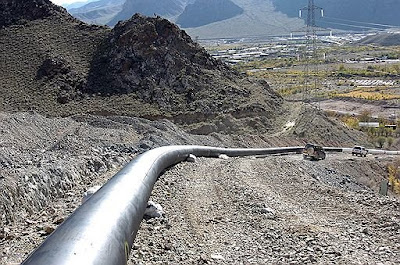
 Greece joined the Russian-Italian South Stream yesterday. An agreement was signed on the construction of a section of the pipeline across Greece with a capacity of 10 billion cu. m. of natural gas per year. Russian Ministerof Industry and Energy Viktor Khristenko and Greek Minister of Development Christos Folias signed the agreement in the presence of Russian President Vladimir Putin and Italian Prime Minister and Greek Prime Minister Kostas Karamanlis.
Greece joined the Russian-Italian South Stream yesterday. An agreement was signed on the construction of a section of the pipeline across Greece with a capacity of 10 billion cu. m. of natural gas per year. Russian Ministerof Industry and Energy Viktor Khristenko and Greek Minister of Development Christos Folias signed the agreement in the presence of Russian President Vladimir Putin and Italian Prime Minister and Greek Prime Minister Kostas Karamanlis.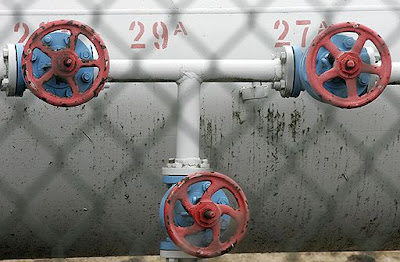



 The
The  A "
A "
 Royal Dutch
Royal Dutch 

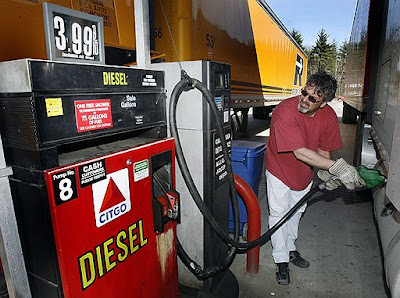


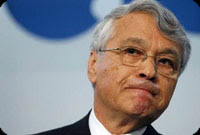

 "
"![[ASIA] Shah Deniz gas prices to change. Azerbaijan](https://blogger.googleusercontent.com/img/b/R29vZ2xl/AVvXsEjwcT_p69UZcqh3oJoo7Og7zkCWfcecN3l68UaEqrqe5hlftTKYobToO2gDGtpCc36V2n3JkVWYEmxt4wNI5tNPL3BkTxe2IljFoXDTCd-Mt5pxqIWPnyg5oCCJv3zSqUCAqvXtSQ/s400/SOCAR.jpg)

 The list excludes companies such as Austrian
The list excludes companies such as Austrian  Iraq's oil production averaged 2.181 million b/d in 2007, oil ministry figures obtained by Platts showed. This is below the average 2.8 million b/d achieved in the final three months before the US-led war of 2003 and far below the country's potential.
Iraq's oil production averaged 2.181 million b/d in 2007, oil ministry figures obtained by Platts showed. This is below the average 2.8 million b/d achieved in the final three months before the US-led war of 2003 and far below the country's potential.